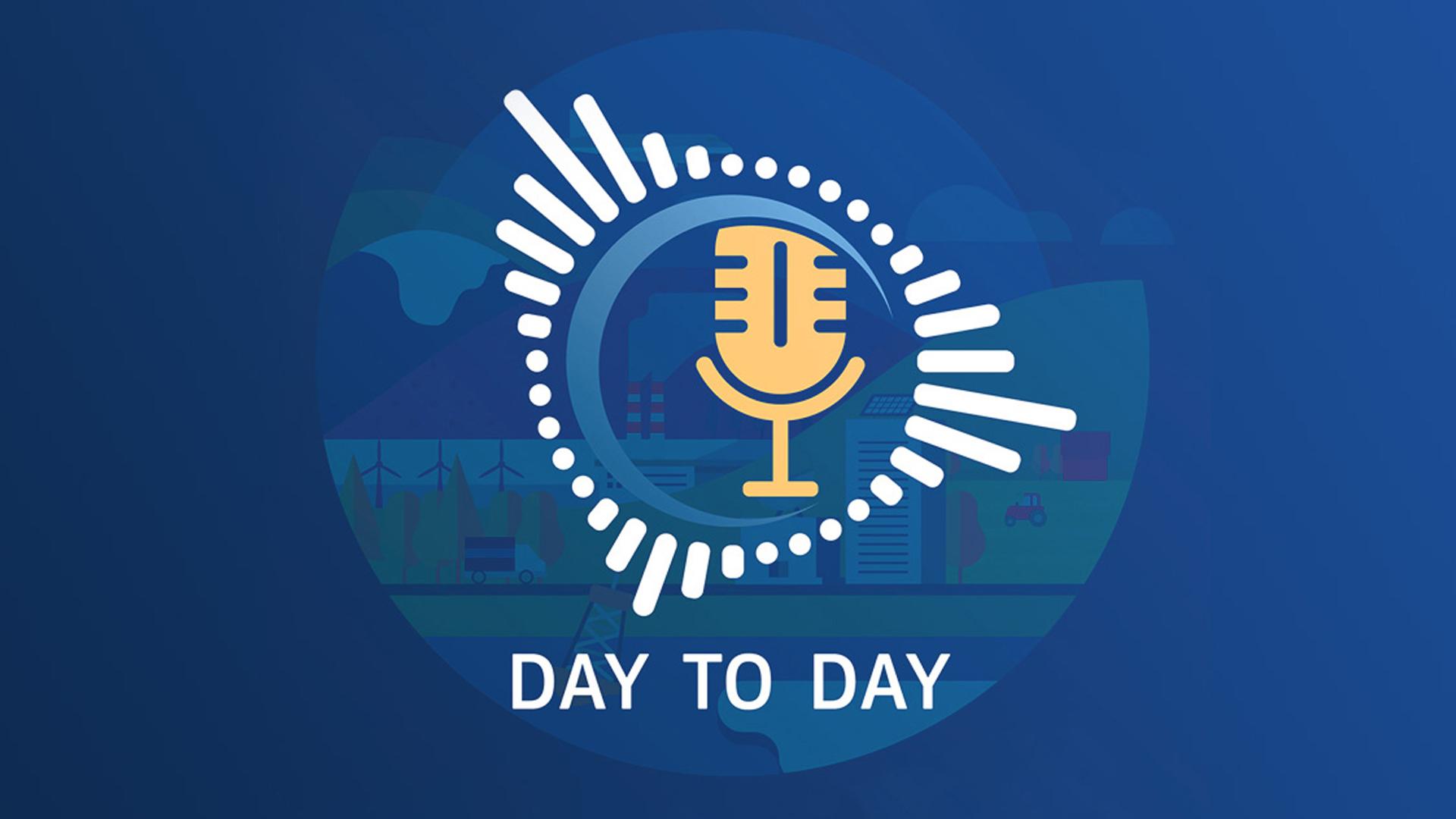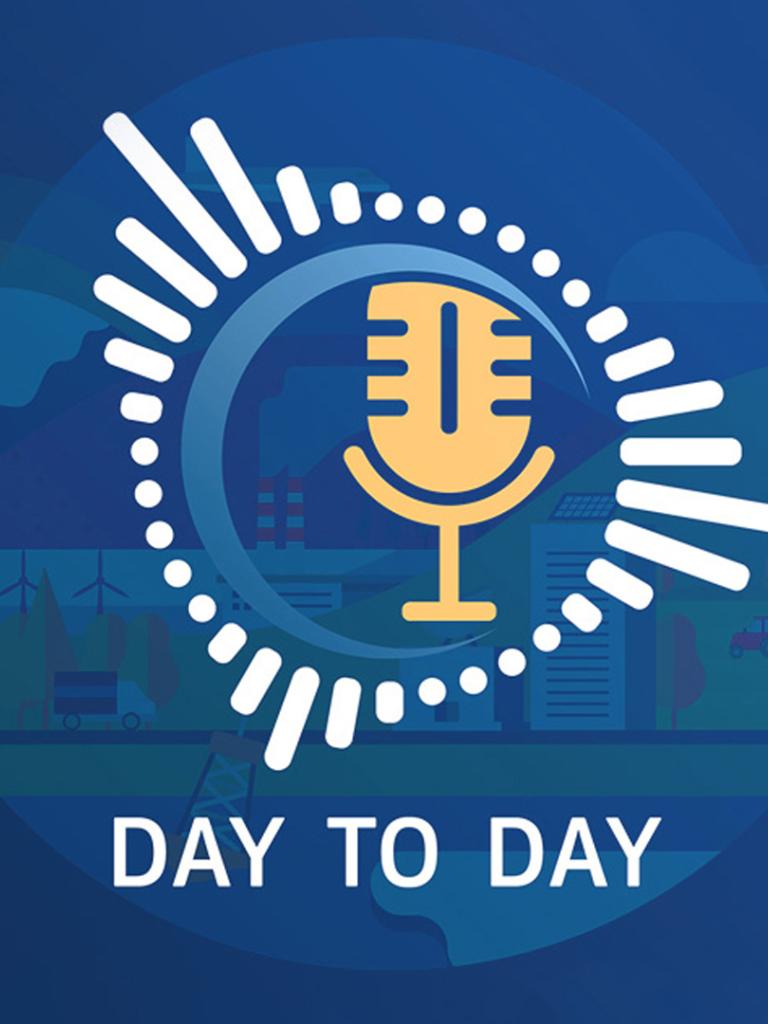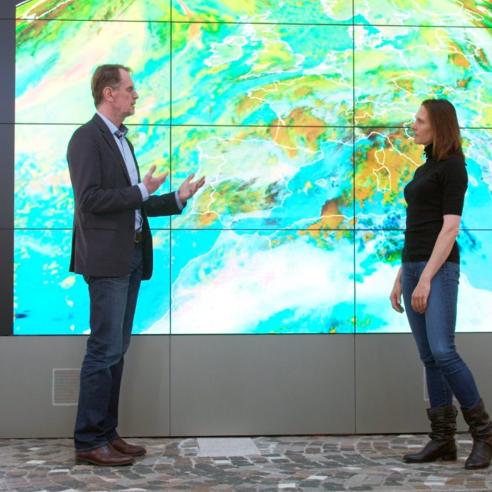
Introducing Day to Day, EUMETSAT’s first podcast series!
If you’ve been looking for something different to listen to then our new podcast series might be just the thing.


Day to Day is an exciting new way for us to bring you interesting discussions around the topic of Copernicus Earth observation data.
15 March 2021
28 April 2020
Each month, you can hear how Earth observation data benefits our day-to-day lives as host Dr Mark Higgins (Training Manager at EUMETSAT) explores the ways in which satellite data is helping us to better understand the planet and its environment.

What is Copernicus?
Copernicus is the European Union‘s Earth Observation Programme, which is taking a continuous “health check” of the planet. Based on satellite and in situ observations, the Copernicus services deliver near-real-time data on a global level to help us better understand our planet and sustainably manage the environment we live in.
Each podcast will feature users of Copernicus data who will discuss their particular area of interest, in the hope that we can provide you with a good overview on the importance of satellites and why their data are crucial for monitoring changes on the planet. The observations gathered from space impacts society at large in many ways – perhaps you never thought about how it affects you personally, but chances are it does!

Episode one: Ocean monitoring and citizen science with Pierre-Yves Cousteau
The first Day to Day podcast explores the topic of ocean observation from space. Host, Mark Higgins, talks to Dr Hayley Evers-King (Marine Application Expert) about her most recent ocean case studies and Pierre-Yves Cousteau (Marine Conservationist and Diver) about his exciting new citizen science project, which involves getting divers to record ocean temperature during their dives.

You can listen to episode one over at Audioboom, Spotify, Apple Podcasts, RadioPublic and Deezer.
We hope you’ll enjoy listening and do keep an eye out for the next episode coming soon, in which we’ll be discussing fires.
Did you know that Copernicus satellites monitor:
- The atmosphere is measured by the Copernicus Atmosphere Monitoring Service (CAMS), and focuses on areas such as air quality, ozone layer and solar radiation. The service lets us know the current atmospheric situation and can also forecast the situation a few days ahead. This can be important, for example, in the case of wildfires and air pollution in general, and how safe an area is for citizens to be in.
- The Copernicus Marine Environment Monitoring Service (CMEMS) provides information on oceans and marine ecosystems. These observations and forecasts support the protection of marine resources, the monitoring of climate change and marine safety. Providing this useful data can help with things like search and rescue operations and weather forecasting.
- The Copernicus Land Monitoring Service (CLMS) provides information on ground cover, vegetation and the water cycle. It also focuses on areas that are particularly vulnerable to environmental challenges and problems.
- The Copernicus Climate Change Service (C3S) responds to any challenges associated with human-induced climate changes, such as temperature rise (due to human-made emissions in the atmosphere). The information gathered helps to monitor and predict climate change and new services can be developed based upon comparing past and current records/measurements.
- The Copernicus Emergency Management Service (Copernicus EMS) provides accurate information to help manage natural disasters, man-made emergency situations, and humanitarian crises. Examples of the services provided include generating maps based on satellite imagery, that can be given to different authorities to help with, for example, emergency responses and recovery. Early warnings for Europe can also be provided, for events such as floods, fires and droughts.
- Information to improve security measures can be provided to help with prevention, preparation and response in a crisis. Examples include border surveillance (rescuing more lives at sea), maritime surveillance (combating marine pollution) and support to EU external action (human rights and economic development). The organisation FRONTEX take care of the border surveillance component of the Copernicus Security Service.
